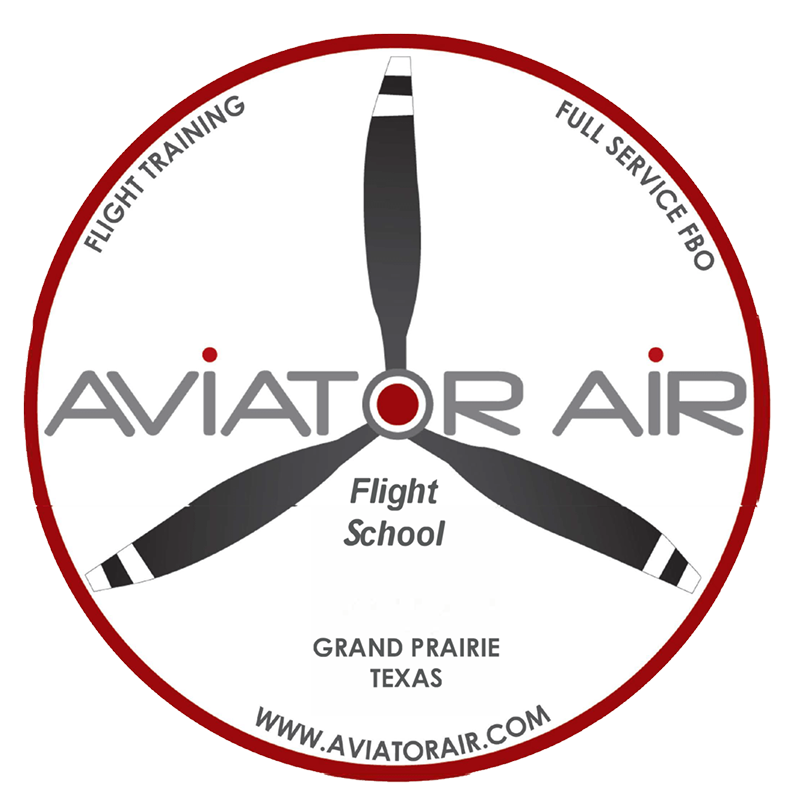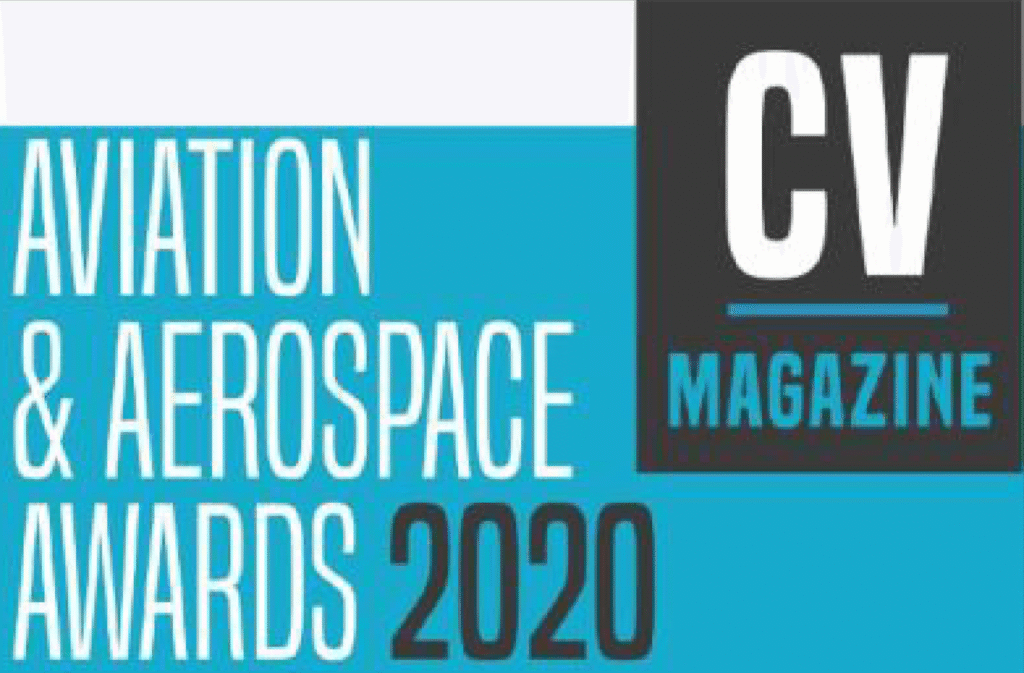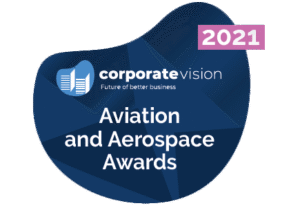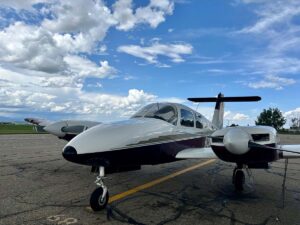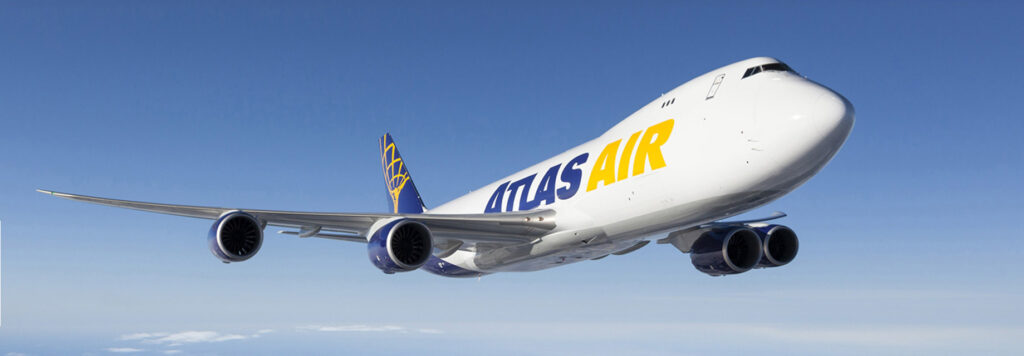Spartan Flight Academy trains students to complete the necessary knowledge training and minimum flight hours needed to earn the following FAA certifications and ratings:
Under the FAA Part 61, the required time to train for a Private Pilot Certificate (also known as Private Pilot License) is 40 hours which consists of at least:
- Dual: 20 hours of flight training with an instructor on the Private Pilot areas of operation that includes:
- 3 hours of cross-country flight training in a single engine airplane;
- 3 hours of night flight training in a single engine airplane, that includes at least-
- 1 cross-country flight of over 100 nm. total distance; and
- 10 takeoffs and 10 landings with each involving a flight in the traffic pattern.
- 3 hours of flight training by reference to instruments in a single engine airplane; and
- 3 hours of flight training in a single engine airplane within the preceding 60 days prior to the practical test.
- Solo: 10 hours of solo flying in a single engine airplane on the Private Pilot areas of operation, that includes:
- 5 hours of solo cross-country flying;
- 1 solo cross-country flight of at least 150 nm. total distance with 3 points and one segment of at least 50 nm. between takeoff and landings; and
- 3 takeoffs and landings at a controlled airport.
NOTE: Where 61.109(a), For an airplane single-engine rating Source
Flying in instrument meteorological conditions (low visibility and clouds) requires additional training. Pilots will have the opportunity to develop their flying skills by training how to: fly using aircraft instruments, advanced communications, and merging into the air traffic control system.
Under the FAA Part 61, the time required to train for an Instrument Rating is at least 50 hours of cross-country flying as a Pilot in Command (PIC), of which at least 10 hours must be in airplanes for an Instrument Airplane rating; and 40 hours of actual or simulated instrument time on the Instrument areas of operation, that includes at least:
Dual:
- 15 hours of instrument training with an instructor in the aircraft category, that includes at least:
- 3 hours of the instrument training were within the preceding 60 days prior to the practical test; and 1 IFR cross-country flight of more than 250 nm. in the instrument-aircraft rating sought.
NOTE: Per 61.65(a)(1), must Hold at least a current private pilot certificate with an airplane rating to the instrument rating sought; Source
This is the opportunity for a pilot to learn advanced maneuvers, professional rules and regulations and work with an “advanced aircraft"*.
Under the FAA Part 61, the required time for a Commercial Pilot with an airplane category and single-engine class rating must log at least 250 hours of flight time as a pilot that consists of at least:
- 100 hours in powered aircraft, of which 50 hours must be in airplanes.
- 100 hours of pilot-in-command flight time, which includes at least
- 50 hours in airplanes; and
- 50 hours in cross-country flight of which at least 10 hours must be in airplanes.
- 20 hours of training on the areas of operation listed in 61.127(b)(1) of this part that includes at least
- Ten hours of instrument training using a view-limiting device including attitude instrument flying, partial panel skills, recovery from unusual flight attitudes, and intercepting and tracking navigational systems. Five hours of the 10 hours required for instrument training must be in a single engine airplane;
- 10 hours of training in a complex airplane, a turbine-powered airplane, or a technically advanced airplane (TAA)* that meets the requirements of paragraph (j) of this section, or any combination thereof. The airplane must be appropriate to land or sea for the rating sought;
- One 2-hour cross country flight in a single engine airplane in daytime conditions that consists of a total straight-line distance of more than 100 nautical miles from the original point of departure;
- One 2-hour cross country flight in a single engine airplane in nighttime conditions that consists of a total straight-line distance of more than 100 nautical miles from the original point of departure; and
- Three hours in a single-engine airplane with an authorized instructor in preparation for the practical test within the preceding 2 calendar months from the month of the test.
- 10 hours of solo flight time in a single engine airplane or 10 hours of flight time performing the duties of pilot in command in a single engine airplane with an authorized instructor on board (either of which may be credited towards the flight time requirement under paragraph (a)(2) of this section), on the areas of operation listed under 61.127(b)(1) that include
- One cross-country flight of not less than 300 nautical miles total distance, with landings at a minimum of three points, one of which is a straight-line distance of at least 250 nautical miles from the original departure point. However, if this requirement is being met in Hawaii, the longest segment need only have a straight-line distance of at least 150 nautical miles; and
- 5 hours in night VFR conditions with 10 takeoffs and 10 landings (with each landing involving a flight in the traffic pattern) at an airport with an operating control tower.
NOTE: Per 61.129(a), For an airplane single-engine rating; Source
* Definition of TAA - https://www.ecfr.gov/current/title-14/part-61/section-61.129#p-61.129(j)
The multi-engine land rating is an add-on to an existing single-engine land private, commercial, or ATP certificate. For this rating, both VFR and IFR operations will be emphasized. There are no minimum time requirements for the multi-engine land rating; however, you will need an instructor endorsement for flight and ground training prior to taking the check ride.
Under the FAA Part 61, the required time for a person who applies for a private pilot certificate with an airplane category and multi-engine class rating must log at least 40 hours of flight time that includes at least 20 hours of flight training from an authorized instructor and 10 hours of solo flight training in the areas of operation listed in 61.107(b)(2) of this part, and the training must include at least
- 3 hours of cross-country flight training in a multi-engine airplane;
- Except as provided in 61.110 of this part, 3 hours of night flight training in a multi-engine airplane that includes
- One cross-country flight of over 100 nautical miles total distance; and
- 10 takeoffs and 10 landings to a full stop (with each landing involving a flight in the traffic pattern) at an airport.
- 3 hours of flight training in a multi-engine airplane on the control and maneuvering of an airplane solely by reference to instruments, including straight and level flight, constant airspeed climbs and descents, turns to a heading, recovery from unusual flight attitudes, radio communications, and the use of navigation systems/facilities and radar services appropriate to instrument flight;
- 3 hours of flight training with an authorized instructor in a multi-engine airplane in preparation for the practical test, which must have been performed within the preceding 2 calendar months from the month of the test; and
- 10 hours of solo flight time in an airplane consisting of at least
- 5 hours of solo cross-country time;
- One solo cross-country flight of 150 nautical miles total distance, with full-stop landings at three points, and one segment of the flight consisting of a straight-line distance of more than 50 nautical miles between the takeoff and landing locations; and
- Three takeoffs and three landings to a full stop (with each landing involving a flight in the traffic pattern) at an airport with an operating control tower.
NOTE: Per 61.109(b), For an airplane multi-engine rating; Source
Under FAA Part 61, requirements for the issuance of flight instructor certificates and ratings consist of at least:
- Hold either a commercial pilot certificate or airline transport pilot certificate with:
- An aircraft category and class rating that is appropriate to the flight instructor rating sought; and
- An instrument rating, or privileges on that person’s pilot certificate that are appropriate to the flight instructor rating sought, if applying for
- A flight instructor certificate with an airplane category and single-engine class rating;
- A flight instructor certificate with an airplane category and multiengine class rating;
- A flight instructor certificate with a powered-lift rating; or
- A flight instructor certificate with an instrument rating.:
NOTE: Per 61.183(c), To be eligible for a flight instructor certificate or rating a person must; Source
